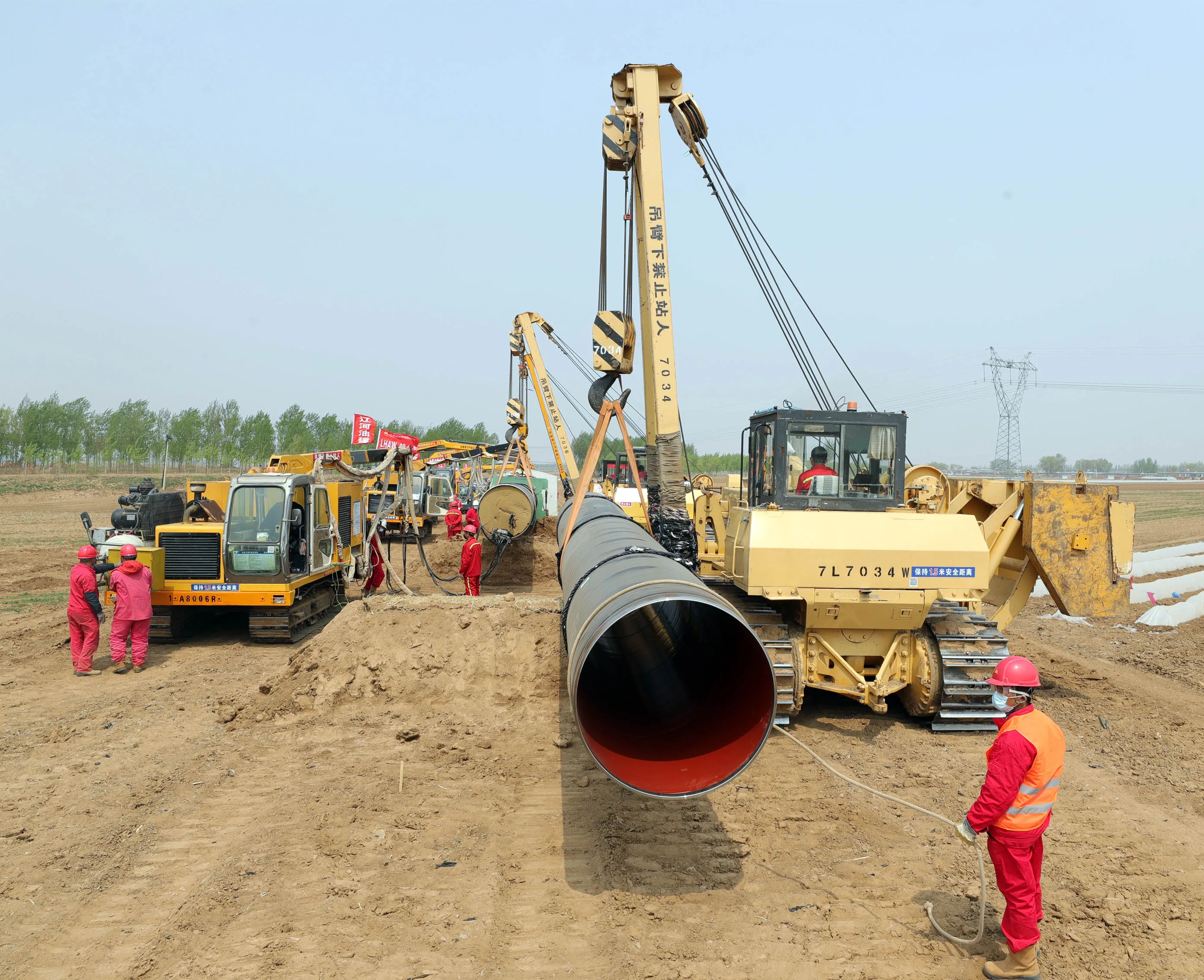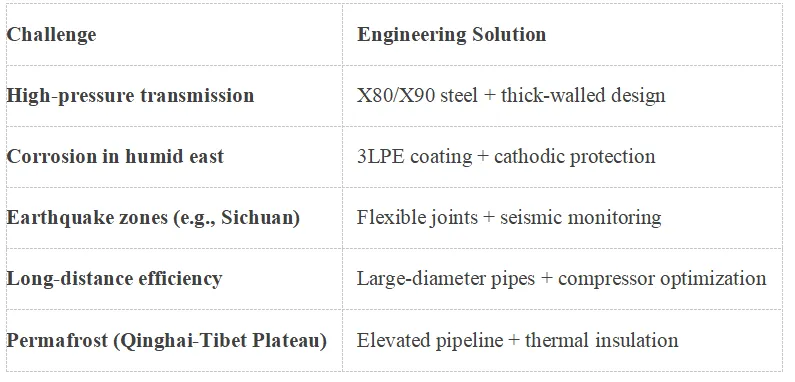 export@ezsteelpipe.com
export@ezsteelpipe.com +86 731 8870 6116
+86 731 8870 6116

China's West-East Gas Pipeline Project is one of the most significant energy infrastructure initiatives in the world, designed to transport natural gas from the resource-rich western regions (Xinjiang, Sichuan, etc.) to the high-demand eastern provinces (Shanghai, Guangdong, etc.). The project consists of multiple pipelines, with West-East Gas Pipeline I, II, III, and IV being the most prominent. Below is a technical and engineering overview:
- Total Length: Over 30,000 km (combined for all lines).
- Diameter: Ranges from Φ1016 mm to Φ1219 mm (X80 high-grade steel).
- Design Pressure: 10–12 MPa (high-pressure transmission).
- Capacity: Over 77 BCM/year (combined).
(1) Pipeline Material & Construction
- High-Strength Steel (X80/X90): Used to withstand high pressure (12 MPa) while reducing wall thickness and material costs.
- Automatic Welding: Advanced automatic welding (SAW, GMAW) ensures high-quality, efficient jointing.
- Corrosion Protection:
- 3LPE Coating (3-layer polyethylene) for external protection.
- Cathodic Protection (Impressed Current & Sacrificial Anodes) to prevent electrochemical corrosion.
- Trenchless Technology: Horizontal Directional Drilling (HDD) used for river and obstacle crossings.
(2) Compressor Stations & Boosting Technology
- Centrifugal Compressors: Driven by gas turbines (25–30 MW each) to maintain flow pressure.
- Variable Frequency Drives (VFDs): Improve energy efficiency by adjusting compressor speed based on demand.
- Station Spacing: ~100–200 km apart (depending on terrain and pressure drop).
(3) Crossing Challenging Terrain
- Mountainous Areas (e.g., Tarim Basin, Qinling Mountains):
- Thick-walled pipes for high-stress sections.
- Landslide monitoring & reinforcement (e.g., soil nails, retaining walls).
- Rivers & Wetlands (e.g., Yangtze River Crossing):
- Directional drilling (HDD) for minimal environmental impact.
- Concrete weight coating for underwater stability.
- Desert Regions (Taklamakan Desert):
- Sand dune stabilization (vegetation, grid barriers).
- Pipe burial depth >1.5 m to prevent thermal and wind erosion.
(4) Safety & Monitoring Systems
- SCADA (Supervisory Control and Data Acquisition): Real-time monitoring of pressure, flow, and leaks.
- Fiber-Optic Leak Detection: Distributed Temperature Sensing (DTS) and Acoustic Monitoring.
- Emergency Shutdown Valves (ESDVs): Automatically isolate ruptured sections.
(5) Gas Treatment & Metering Stations
- Gas Cleaning: Removal of H₂S, CO₂, and moisture at source fields (e.g., Tarim Basin gas contains high sulfur).
- Odorization: Adding THT (tetrahydrothiophene) for leak detection.
- Custody Transfer Stations: Ultrasonic flow meters for accurate billing.

- New routes to Guangdong & Fujian (increasing capacity by 30 BCM/year).
- Digital Twin Technology: AI-based predictive maintenance.
- Hydrogen-Blending Readiness: Future-proofing for hydrogen transport.
The West-East Pipeline Project represents cutting-edge pipeline engineering, combining high-strength materials, automation, smart monitoring, and terrain adaptation. It serves as a model for long-distance, high-pressure gas transmission, balancing safety, efficiency, and environmental protection.
 Related Products
Related Products